Asian empires of the Mongols
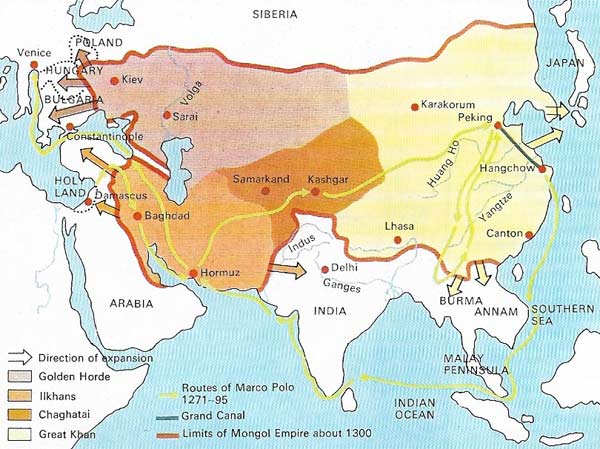
Figure 1. Despite the terror which the Mongols inspired, their domination of large areas of Asia and parts of Europe led to the development of trade routes used by traders of many nations in the 13th century. The Venetian Marco Polo set out for Peking in 1271. It was more than 20 years before he returned to Europe to describe the wealth and splendor of the Kahn's court.
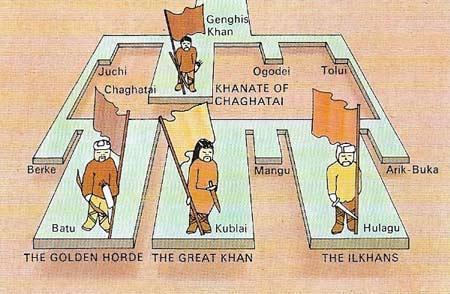
Figure 2. Genghis Khan United the Mongol tribes in 1206 under his leadership. After his death in 1227, the frowning Mongol Empire was divided into four among his descendants, with Ogodei as chief.
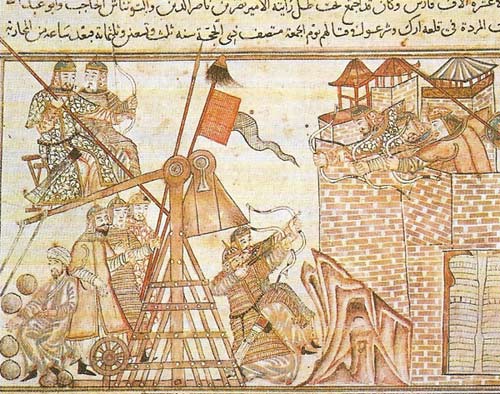
Figure 3. Mongol troops are shown attacking a town with the aid of siege engines. These engines, called mangonels, were made by a German in China in 1273.
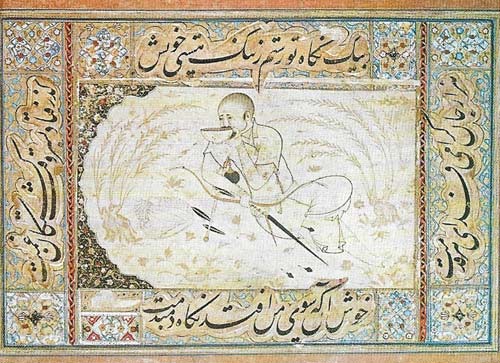
Figure 4. Hulagu, invaded Iran in 1256, captured Baghdad and later defeated the Assassins, but was himself defeated by the Mamelukes in Syria. This was a turning point on Mongol history.
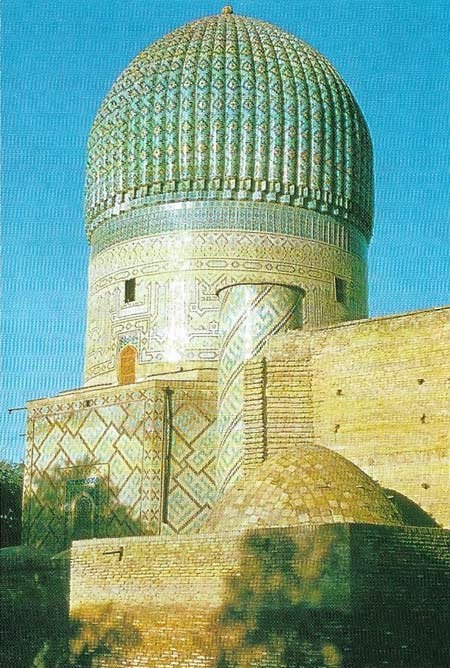
Figure 5. The Gur Emir, the tomb of Tamerlane (1336–1405) at Samarkand, was finished in 1434. This is one of the many magnificent buildings which this Mongol ruler, who was a great patron of the arts as well as a warrior, had constructed in Turkestan, his favourite region, and elsewhere. With his Tatar supporters, he temporarily reunited the empire of Genghis Khan.
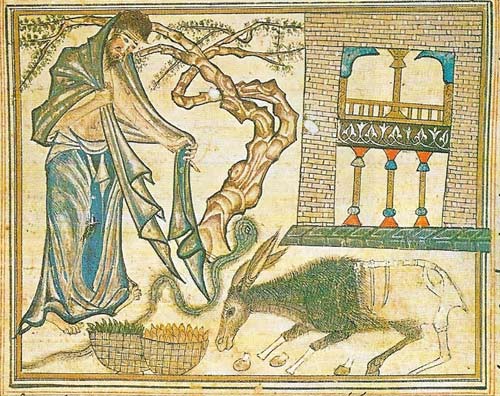
Figure 6. The prophet Jeremiah is illustrated in Rashid ad-Din's History of the World (1306). The author, a physician on the court of Abaga-Khan, the Mongol ruler of Persia, included biblical themes in his world history – an indication of mongol tolerance of alien religions. This illustration also shows Chinese cultural influences – another indication of Mongol absorption of foreign ideas.
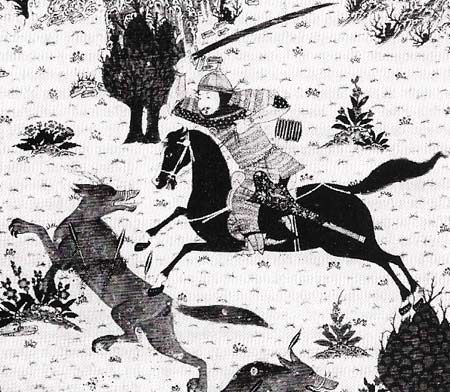
Figure 7. The horsemen who formed the elite of the Mongol armies were the key to their military success. They were trained to use the bow or sword while at full gallop.
The Mongol Empire, at the height of its power in the 13th century, was the largest land empire in history. It stretched from the Yellow Sea in the east to the Danube in the west and included areas of present-day Russia, China and Iran.
The origins of the Mongols are obscure. They were traditionally nomadic tribes who lived in felt tents called yurts, and followed their herds of horses, cattle, camels and sheep on an annual round of pasturage in the areas that are now Manchuria, Mongolia and Siberia. The numerous, loosely organized and constantly feuding Mongol tribes were first brought together as a unified nation under Genghis Khan (1167–1227) who became ruler of all the Mongols in 1206 (Figure 2).
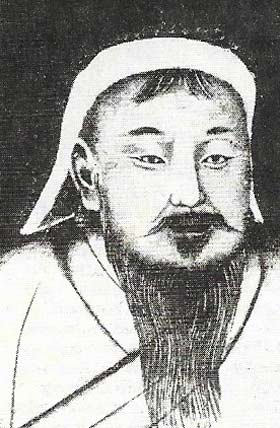 |
| Genghis Khan, portrayed here by a Chinese artist, was a politician as well as a warrior. He skillfully used patronage and alliances to further his aims. |
Genghis Khan and the Mongol Empire
Genghis Khan's first move was to reorganize the major tribal groups in Mongolia as well as those on the Siberian borders. He then turned his attention to China. In 1211 he launched an attack on the Ch'in Empire, in northern China, an attack that continued until the whole of China finally came under Mongol domination in 1279.
But China was not the only target: the hitherto unknown Mongols also raided the west. In 1219–1220 Genghis Khan defeated Mohammed Shah of Khwarizm, and as a result acquired Transoxiana and Persia. Two of his generals defeated successively the Georgians, the Kuman-Turks, on the Volga-Don steppe – later to provide the manpower reserve of the Mongol Golden Horde that dominated Russia – and the Russian armies themselves, on the Dnieper. The Mongol armies then withdrew to central Asia.
Genghis Khan's successors
Ogodei (1185–1241), who succeeded to the khanate after the death of Genghis in 1227, resumed the western offensive and Persia, Georgia and Armenia were overrun as far as the Black Sea. At the same time the eastern campaign led to the defeat of the Ch'in in 1234 and pressure against the Sung dynasty in South China increased.
Batu (died 1255), Genghis's grandson, drove north of the Caspian and the Caucasus into Europe, defeating the Bulgars on the Volga and capturing many cities, including Kiev, before splitting his army into two and initiating attacks on Poland and Hungary. Cracow and Breslau were captured and a German and Polish army defeated at Legnica in 1241. Batu himself devastated the Hungarian army at the Sajo, captured the towns of Pesth and Gran, and then led his forces to the Adriatic. No attempt was made to hold Hungary or Poland, but a Mongol base was established on the lower Volga to supervise the Russians and the Kumans.
Another grandson, Hulagu (1217–1265) (Figure 4), the founder of the Persian Il khan dynasty (the title recognized subordination to the Great Khan), campaigned to the southwest. The Isma'ili sect, the Assassins, lost their great stronghold of Maymundiz in 1256; Baghdad fell in 1258 when the Abbasid caliph was killed. The conquest of Aleppo and Damascus followed, but in 1260 the Mongols met their first defeat, at Ain Jalut, at the hands of the Mamelukes under Baibars (1233–1277), whose army had been battle-hardened against the Crusaders.
The Mongol army was commanded in this battle by the Christian Kitbogha, which illustrates the wide range of religions accepted by the Mongols. Shamanism, Buddhism, Islam and Nestorian Christianity were all practised, but in general the Mongols themselves were Shamanists. This tolerance explains the presence of various Christian priests at the Mongol court, and it encouraged and enabled Marco Polo (1254–1324) to travel across Asia to China. In fact the Mongol khans appear to have had a genuine intellectual interest in religion, and debates between experts of different faiths are reported by observers (Figure 6).
Kublai Khan conquers China
In 1260 Kublai (1216–1294) became Great Khan, moving his capital from Karakorum to the site of present-day Peking in 1264. From there he conducted the campaigns that led to the annexation of all China, an area where the Mongol terror tactic was not general.
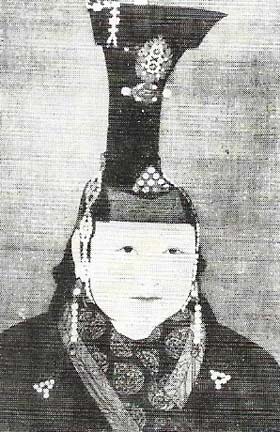 |
| A Yuan empress (from the dynasty founded by Kublai Khan) wears a medieval Mongolian headdress. Similar headdresses were still worn into the twentieth century. |
Although the campaign did not finish until 1279, the Yuan dynasty that Kublai founded is generally reckoned to run from the foundation of the new capital until the last ruler fled before the Ming armies to seek refuge in the Mongol homeland in 1368. But the empire of which Kublai was the last ruler had broken up much earlier, for by 1295 the western Khans had accepted Islam and were no longer willing to submit to the overlord-ship of a non-Muslim Great Khan.
Nor did all Kublai's campaigns prove successful. In the north he was never able to subdue Kaidu (died 1301), the grandson of Ogodei. To the south, Burma surrendered but was not occupied, while in northern Vietnam disease forced a withdrawal. A sea-borne campaign against Java was defeated, as was an attempted invasion of Japan. After Kublai's death there were nine rulers up to 1368. The dissolute rule of the last emperor, Togan Timur, saw revolts and chaos develop into open rebellion in 1348 and eventual defeat by the Chinese insurgents.
In the Middle East and in Russia Mongol dynasties continued to rule until 1502, although by that time they were little more than nominally Mongol because their various conquests had diluted the original Mongol groups to a considerable extent.
